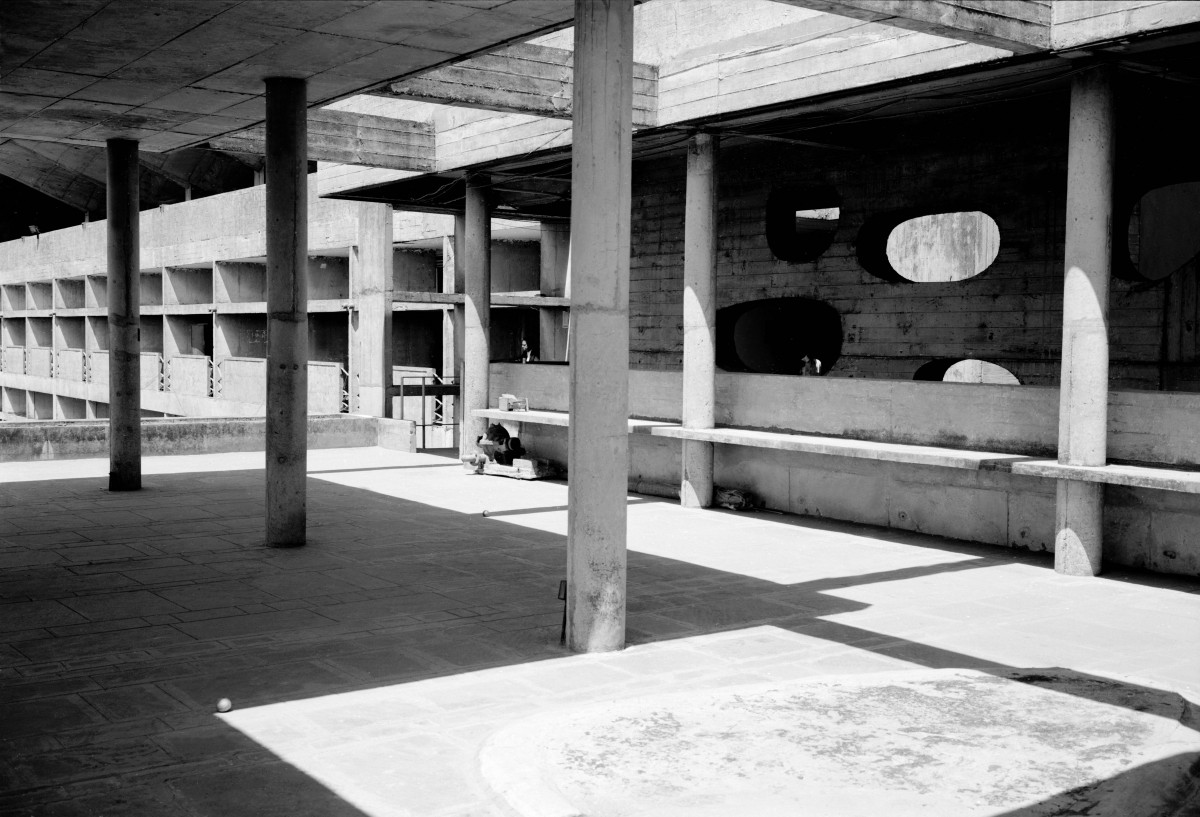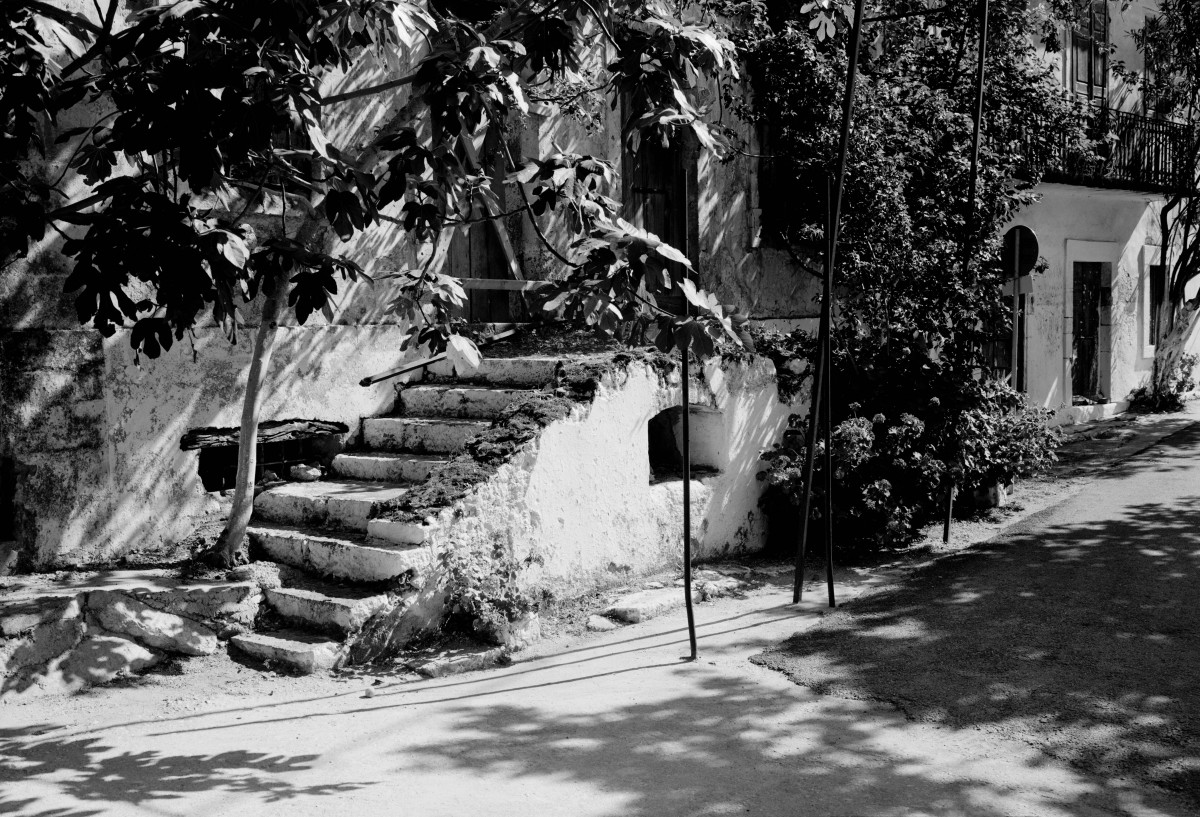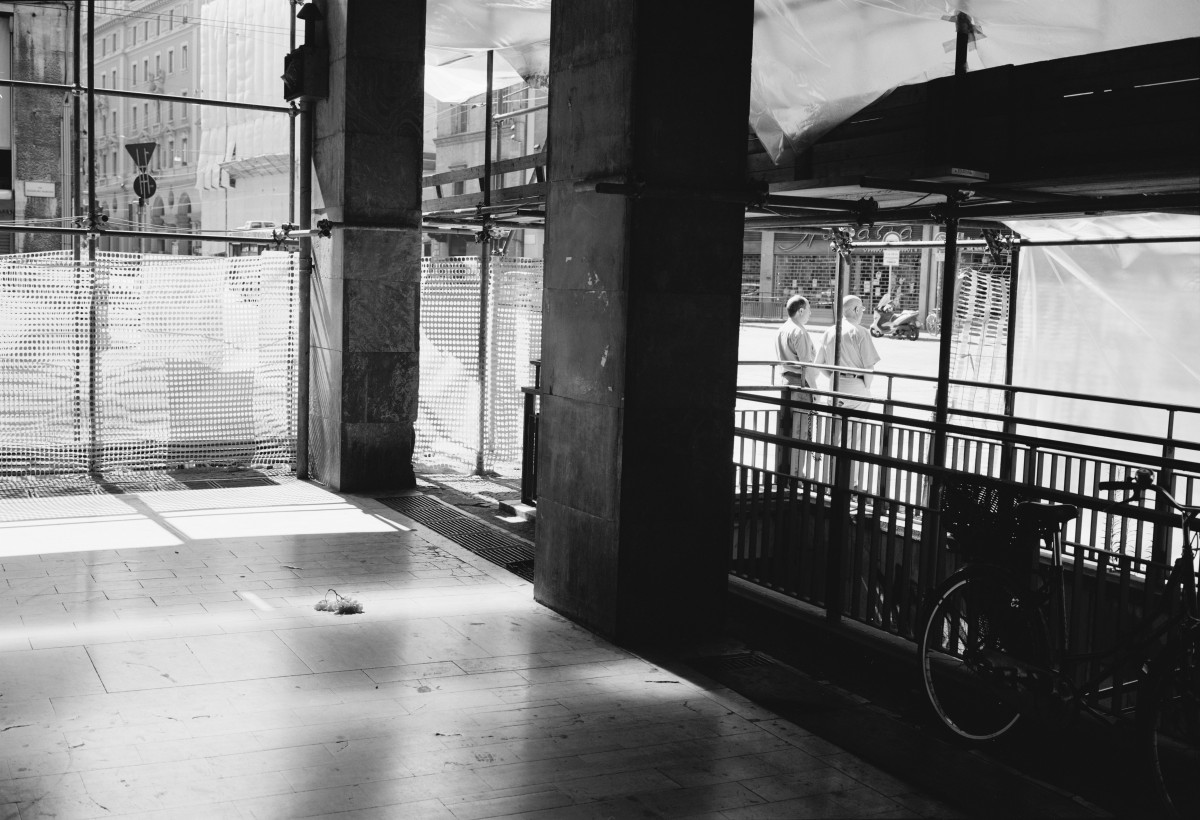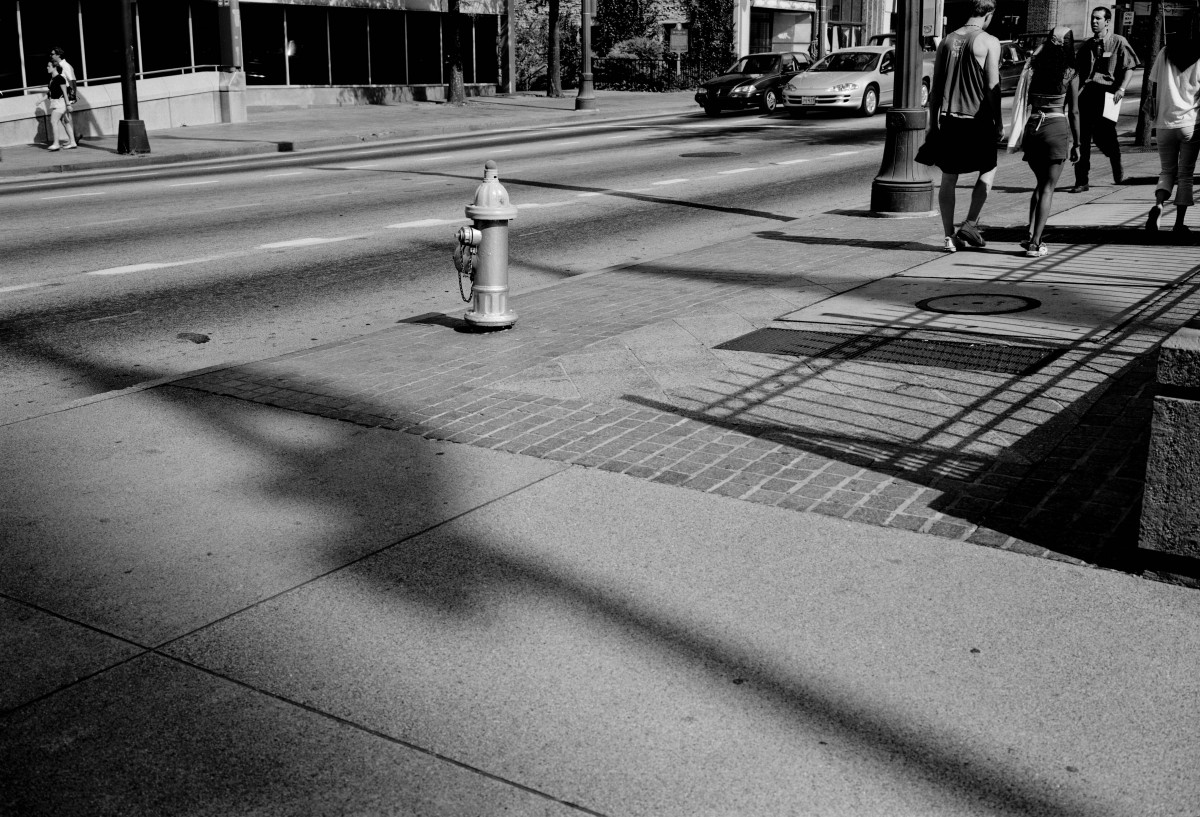Not so long ago street photography was regarded as the essence of the medium. Modelled on the ‘decisive moment’ it was an art informel, conjuring minor epiphanies from the flow of the everyday.
In the recent move to self-conscious high art, the genre has been remade by theatrics and cinematics. The photographer-observer has been overshadowed by the photographer-director. Where the street was once a fluid space for the photographer’s “dynamic of anticipatory framing”, it has become a stage for grand enactments.
Jason Evans retains that older position of the lone photographer-observer. At the same time, he adds the lightest of director’s touches. Fruit has been plucked and placed in each scene.
[ms-protect-content id=”8224, 8225″]
Could we compare such intervention with other uses recent of the camera? Certainly. But something much older comes to mind. In 1533 Hans Holbein stretched an abstract shape across the apparent realism of his formal portrait The Ambassadors. Faced with this anamorphic distortion we move to the side of his painting to grasp what turns out to be a skull. There is no single place from which to see this image: there are two.
We must give up our wish for a master position and hand it back to Holbein, the director. Of course there is nothing obviously anamorphic in Evans’ apparent realism. But his placed elements transform what we see, giving us two attitudes to photography that won’t add up. At first his viewpoint seem to be that of the invisible outsider, making a tentative assessment of a new place. But he has already entered the scene. He has adjusted it for us. He has stepped into the frame, left something behind, backed well away and stepped out.
Plucking and placing. This is the essence of the Still Life. In painting it was always the lowest of the genres, rooted in the base material of daily life. And there is nothing more basic than food. Evans ate it on his travels but photographed it too. In each image the fruit is local to the area. It may be out of place in the picture but it is on home ground. It belongs there, much more so than a Kiwi fruit in a Kensington fruit bowl, or a banana in Bolton. We see Bologna grapes, a Kefalonia plum, an Atlanta peach, a Chandigarh wood apple. However disruptive these pictures, there is a deeper harmony.
Knowing the gesture (it’s not a conceit), we scan the photographs as flat surfaces and explore them as deep spaces. We look with hawk-eyed mission but feel a temptation to drift. We sense Evans’ switch from forensic involvement to contemplative distance and back again.
In photography, theatre need only be small to transform everything. These photographs play with its limits. Just how small can theatre be? However minor Evans’ adjustment, it is there. However buried in the frame, it is there. However ephemeral, the effect is absolute. These are not virginal pictures. There is no going back. You can’t unring a bell.
[/ms-protect-content]
Published in Photoworks Issue 2, 2004
Commissioned by Photoworks




